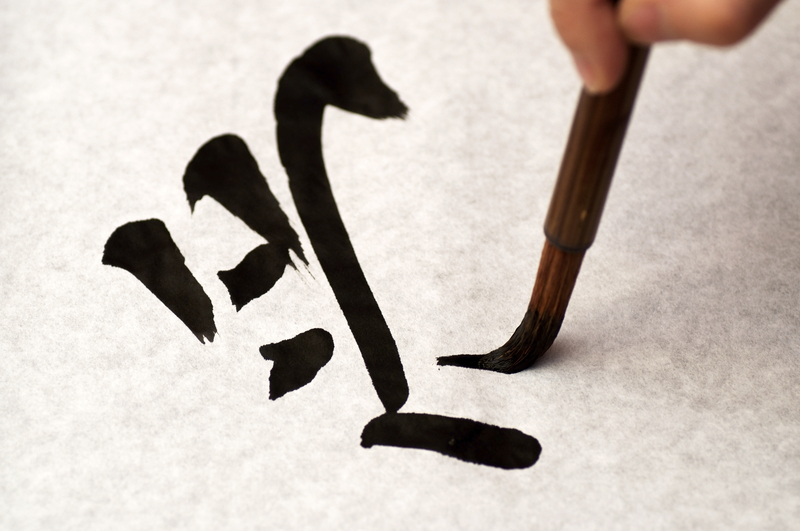Avoid Re-Accumulation with Clutter Control Techniques: A Comprehensive Guide
Are you frustrated by the constant battle against clutter in your home or workspace? You're not alone. While decluttering provides a wonderful sense of relief, avoiding re-accumulation is the real key to achieving lasting organization. This comprehensive article explores proven clutter control techniques to keep your environment streamlined and stress-free.

Why Clutter Returns: Understanding the Root Cause
Many people wonder why clutter seems to magically reappear, even after a thorough cleaning. The truth is, clutter is often a symptom of underlying habits and lifestyle patterns. Understanding why re-accumulation happens is the first step in crafting a plan for prevention.
- Impulse Purchases: Unplanned shopping quickly leads to added possessions that may not serve a real purpose.
- Lack of Systems: Without an organized spot for everything, items naturally pile up in random places.
- Emotional Attachments: Holding onto items for sentimental reasons can foster unnecessary accumulation.
- Busy Lifestyles: When life gets busy, tidying and sorting are often neglected.
With these causes in mind, let's dive into actionable strategies to banish clutter for good.
Foundational Clutter Control Techniques
1. Adopt a "One In, One Out" Policy
Preventing clutter from re-entering your life starts with mindful acquisition. The "one in, one out" rule is simple but effective: whenever you bring a new item into your space, commit to removing an old one.
- *Bought a new shirt? Donate, sell, or recycle an old shirt you no longer wear.*
- *Received a new kitchen gadget? Pass along a seldom-used tool.*
This clutter control technique helps you maintain balance and makes you consider purchases more thoughtfully.
2. Create Designated Homes for Everything
When every item has a specific place, mess won't creep back in. Establish permanent storage solutions for all categories, no matter how small:
- Keys: Pick a wall hook or decorative bowl by the door.
- Mail: Set up a tray or bin for sorting incoming and outgoing correspondence.
- Chargers: Designate a drawer or caddy for electronics accessories.
Label storage bins, drawers, and containers so everyone in your household knows what goes where. Consistency is vital to prevent re-accumulation of clutter.
3. Embrace Regular Decluttering Sessions
*Decluttering isn't a once-a-year event!* Make it a consistent habit. Aim for quick monthly or quarterly mini-purges, focusing on:
- Closets and clothing
- Books and magazines
- Kitchen cabinets and pantries
- Toys and kids' items
- Bathroom supplies and cosmetics
Set a recurring reminder on your calendar or tie decluttering sessions to changing seasons for a seamless routine.
Advanced Clutter Control Strategies for Long-Term Success
4. Set Boundaries with Storage Limits
Space is finite. Instead of expanding storage to fit more stuff, set clear physical boundaries for your possessions:
- Limit book collections to a single shelf.
- Cap kitchen gadgets to what fits in two drawers.
- Designate a single basket for pet toys or memorabilia.
When a category outgrows its space, it's time to pare back. This strategy stops clutter from spiraling and keeps your environment manageable.
5. Practice Mindful Purchasing
Before buying something new, ask yourself:
- Do I truly need this item?
- Is it replacing something old?
- Is there room for it?
- Will I use it regularly or is it for a rare occasion?
Practicing conscious consumerism reduces clutter re-accumulation at its source--and saves money!
6. Digitize to Declutter
If paper and sentimental items are sources of overwhelm, go digital where possible:
- Scan important documents and shred physical copies.
- Take photographs of keepsakes before letting go.
- Switch to e-statements and digital subscriptions.
Digital organization comes with its own challenges, but it vastly reduces physical clutter.
7. Develop Daily Micro-Habits
Small actions, repeated regularly, prevent big messes. Try these easy daily habits:
- Take 5 minutes at the end of the day to return items to their "homes".
- Open mail over the recycling bin, dealing with junk immediately.
- Do a quick closet scan before laundry day, pulling out items to donate.
Over time, these rituals become second nature, making the avoidance of clutter re-accumulation effortless.
Room-By-Room Guide to Maintaining a Clutter-Free Home
Kitchen Clutter Control Techniques
- Clear the counters daily--make "clean sweep" your mantra.
- Regularly check pantry items for expired goods.
- Organize food storage containers with only matching lids and bases.
Living Room & Entryway Clutter Solutions
- Use baskets or trunks to collect magazines, remotes, and stray items.
- Employ a shoe rack or tray to keep footwear in check by the door.
- Establish a "drop zone" for bags, coats, and keys--clear it weekly.
Bedroom Clutter Prevention
- Limit decor to a few favorite pieces instead of stuffing surfaces.
- Embrace under-bed storage for seldom-used seasonal or sentimental items.
- Try a capsule wardrobe to minimize clothing overload.
Bathroom Clutter Management
- Dispose of expired makeup and medicine monthly.
- Use drawer dividers and clear bins for toiletries.
- Embrace minimalism--keep out only daily essentials.
Declutter with the Family: Get Everyone On Board
Clutter control is a team effort! Involving all members of your household in re-accumulation prevention techniques ensures success:
- Assign age-appropriate tidy-up tasks to children.
- Hold regular "family reset" sessions--make it a game or set a timer for extra fun.
- Model mindful purchasing and donating practices; kids learn what they see.
Creating a culture of simplicity helps everyone understand the value of order and the importance of avoiding clutter build-up.
Technology for Clutter Prevention: Apps & Tools
In today's digital age, technology can be a powerful ally in clutter control. Consider:
- Inventory Apps: Track what you own and set reminders to donate or replace items.
- Task Management Tools: Use apps like Todoist, Microsoft To-Do, or Google Keep to schedule regular tidying sessions.
- Donation Pick-Up Services: Arrange pickups for unwanted goods through online platforms, saving time and reducing resistance.
Utilizing tech removes excuses and helps you stick to your new clutter-free lifestyle.
Troubleshooting: What to Do When Clutter Creeps Back
Sometimes, even the best organizational systems can falter. When you notice the early signs of clutter re-accumulation, act quickly:
- Re-evaluate Storage: Are your "item homes" practical and accessible?
- Quick Purge: Spend 10 minutes removing obvious outgrown or unused items from a trouble spot.
- Assess Habits: Have you recently slipped back into impulse buying or skipping daily tidy-ups?
Remember: It's okay to have small setbacks--what matters is your commitment to keep going.
Psychological Benefits of Clutter Control
Maintaining a tidy home or office isn't just about appearances. The perks of avoiding re-accumulation of clutter extend deeply into your well-being:
- Reduced Stress: Visual order calms the mind and lowers anxiety.
- Boosted Productivity: A neat space helps you focus and get more done.
- Enhanced Creativity: Clutter-free environments inspire fresh thinking and innovation.
- Improved Decision-Making: Less "stuff" means fewer distractions and more mental clarity.
It's clear: Clutter control techniques enhance quality of life in powerful ways.

Frequently Asked Questions on Clutter Control & Re-Accumulation
How often should I declutter?
Major decluttering can be done once or twice a year, but monthly or quarterly "refreshes" are best for preventing build-up.
What if I don't have time to organize every day?
Even 5-minute tidy-ups each night can make a big difference. Focus on high-traffic areas and enlist help from family or roommates.
How can I let go of sentimental items?
Keep only what truly brings you joy. Take photos of the rest before donating or discarding, preserving the memory without the physical object.
Is it possible to be too minimalist?
Clutter control isn't about deprivation--it's about choosing what serves and delights you. Tailor your environment to your unique needs and preferences.
How do I prevent digital clutter?
Regularly delete unused files, organize your inbox, and use cloud storage for important documents with appropriate folder structures.
Conclusion: Lasting Clutter Prevention Starts with YOU
Clutter is a challenge--but not an insurmountable one. By implementing clutter control techniques, you empower yourself to avoid re-accumulation and enjoy the calm, organized space you deserve.
- Start small--choose one area, apply these tips, and build from there.
- Be consistent--habits are your secret weapon.
- Involve others and use technology for extra support.
With dedication and the right strategies, lasting clutter control is not only possible--it's life-changing. Take the first step today toward a more peaceful, productive, and clutter-free future!